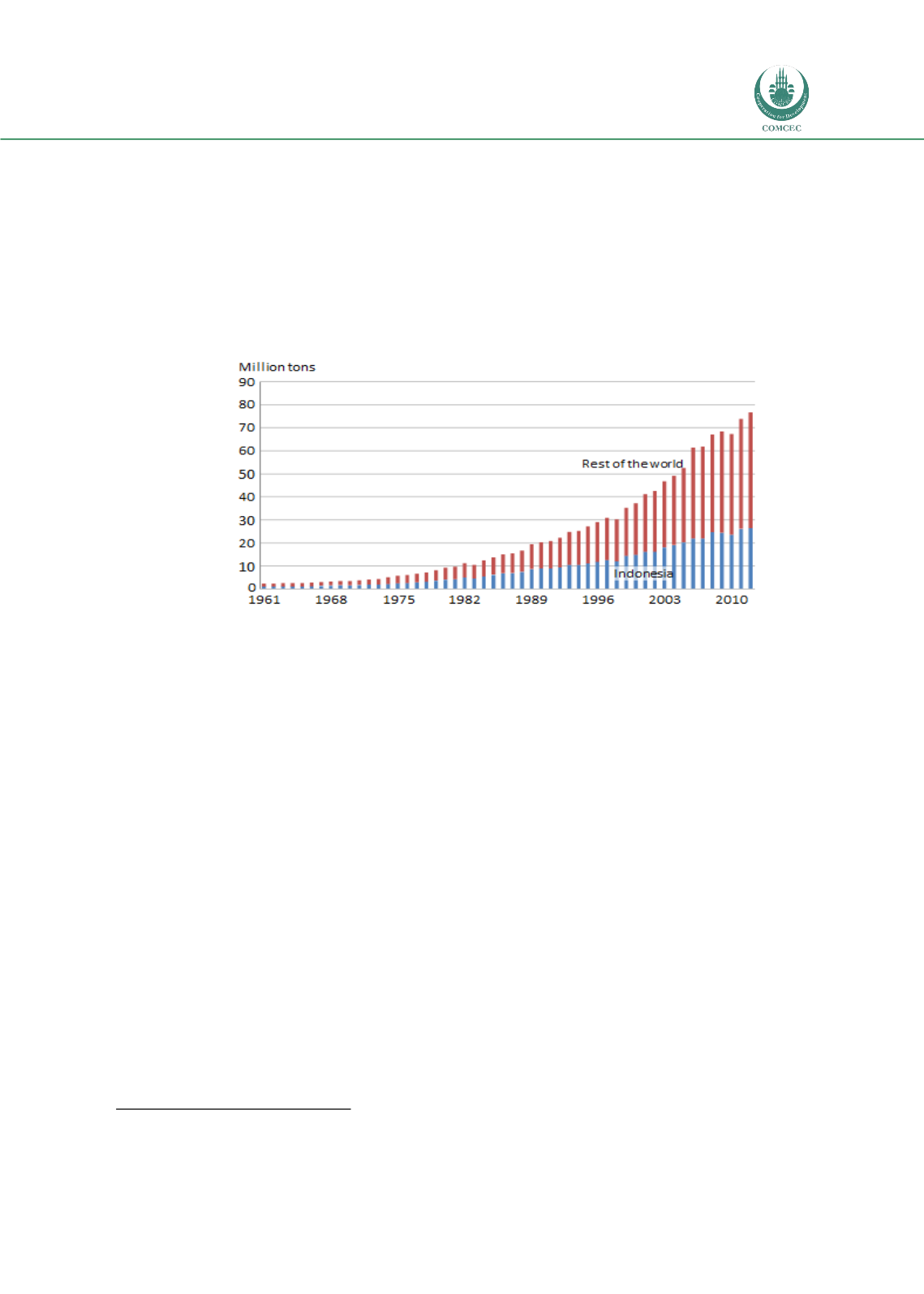

Facilitating Smallholder Farmers’ Market Access
In the OIC Member Countries
75
company.
135
This setup began to change with the advent of outgrower schemes in which
smallholders, situated near a processing plant, produce much of the fruit. In some
instances production is organized into “nucleus estates,” where smallholders surround an
area of plantation-managed land. Today Indonesia is the world’s largest palm oil producer,
accounting for nearly one-third of global production
(Figure 46). Smallholders account for
most oil palm production, although some oil palm is still grown on estates.
The integrated nature of palm oil production has created opportunities to resolve some of
the traditional difficulties in smallholder production, although the structure of the
production system creates challenges as well. For example, to minimize processing costs
and avoid spoilage, deliveries of oil palm must be coordinated, and processors require
fresh fruit bunches of uniform quality. Transporting unprocessed fruit is expensive, and
the quality of palm fruit declines as travel times increase. For that reason, processing plant
owners have an interest in seeing that local producers are productive, and they supply
inputs and technical advice to an extent that is rare for most other crops grown by
smallholders. At the same time, transport facilities often link producers to a single
processing center, leaving them little choice about where to market their produce.
A recent survey of more than 1,000 smallholders in various locations throughout
Indonesia finds that smallholders having contracts with a plantation company produce
more—roughly 10–15 percent more—palm fruit. Among contract farmers who receive
credit, 55 percent receive loans from the plantation company; another 33 percent receive
loans from a bank or credit union. Independent smallholders receive about 73 percent of
their loans from banks or credit unions and another 9 percent from a cooperative.
136
Yet
despite the advantages of credit and assured sales, smallholders, whether under contract
or not, produce fruit bunches of lower quality than those produced under management in
135
Moll (1987).
136
IFC (2013a).
FIGURE 46: PALM OIL PRODUCTION IN INDONESIA AND THE REST OF THE WORLD, 1961–2012
Source:
FAOSTAT (FAO 2014).

















